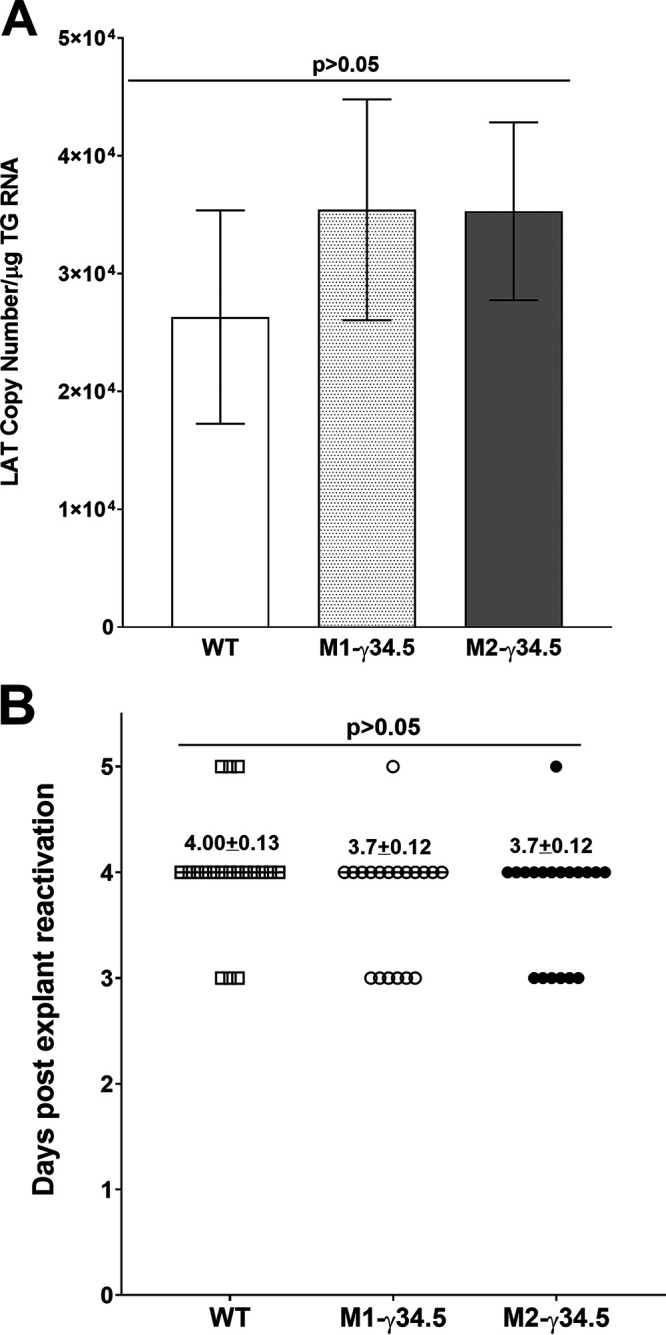FIG 8.

Latency and explant reactivation in TG of latently infected mice. (A) LAT expression in trigeminal ganglion (TG) of infected mice. Latency levels in TG were analyzed by harvesting TG from latently infected WT, M1-γ34.5, and M2-γ34.5 mice on day 28 p.i. and performing qRT-PCR on individual TGs from each mouse. In each experiment, estimated relative LAT copy number was calculated using standard curves generated from pGEM-5317. Briefly, pGEM-5317 DNA, serially diluted 10-fold such that 5 μL contained from 103 to 1011 copies of LAT, was subjected to TaqMan PCR with the same set of LAT primers. Copy number for each reaction was determined by comparing the normalized threshold cycle of each sample to the threshold cycle of the standard. GAPDH expression was used to normalize relative LAT RNA expression in the TG. Twenty TGs were analyzed per mouse group. (B) Explant reactivation in TG of latently infected mice. TGs from latently infected WT, M1-γ34.5, and M2-γ34.5 mice were individually isolated on day 28 p.i. Each individual TG was incubated in 1.5 mL of tissue culture medium at 37°C. Medium aliquots were removed from each culture daily for up to 5 days and plated on indicator RS cells to assess the appearance of reactivated virus. Results are plotted as the number of TGs that reactivated daily. The average time that TGs from each group first showed cytopathic effect ± SEM is shown. Reactivation is based on 20 TGs from 10 mice per group.
